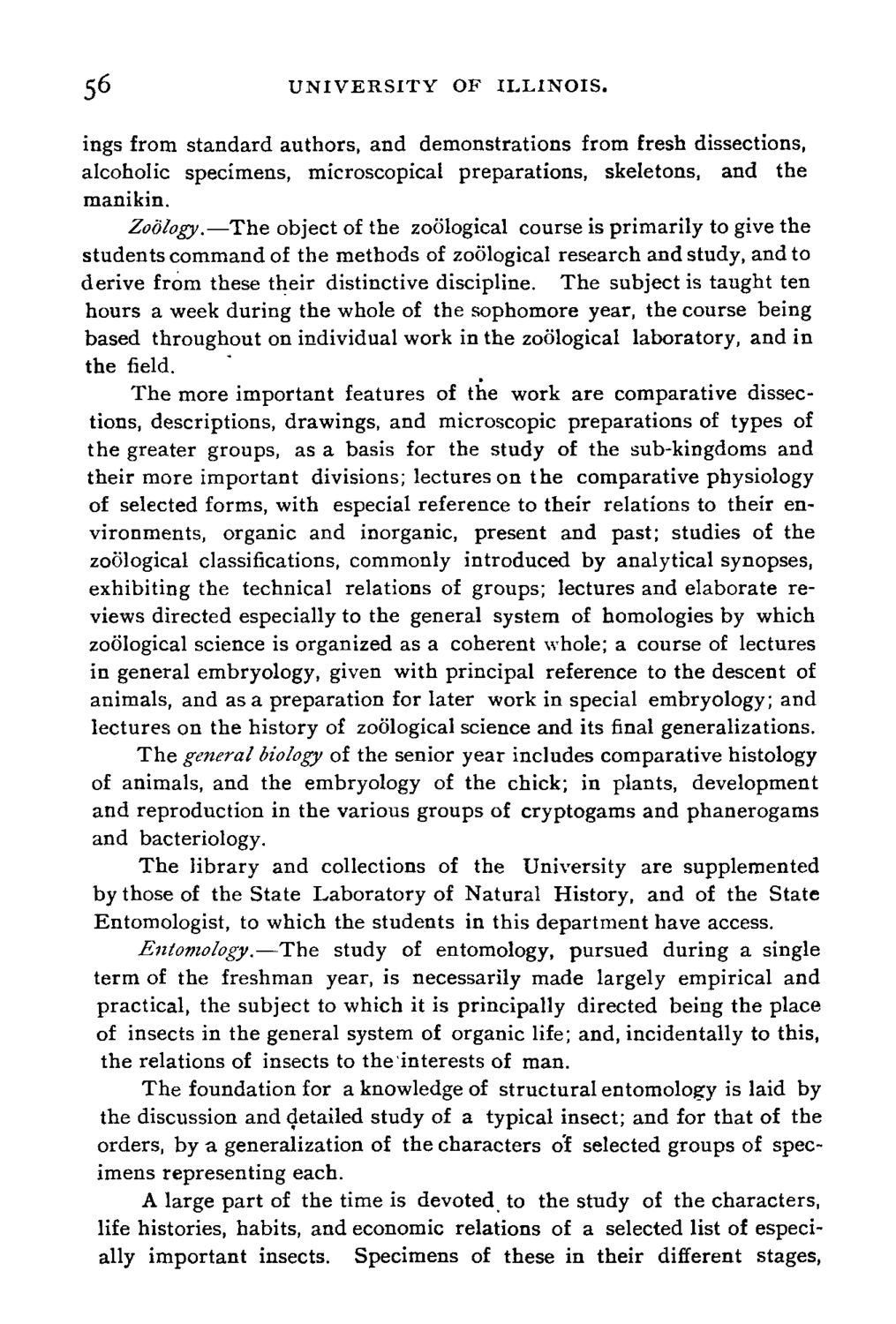| |
| |
Caption: Course Catalog - 1890-1891
This is a reduced-resolution page image for fast online browsing.

EXTRACTED TEXT FROM PAGE:
56 UNIVERSITY OF ILLINOIS. ings from standard authors, and demonstrations from fresh dissections, alcoholic specimens, microscopical preparations, skeletons, and the manikin. Zoology.—The object of the zoological course is primarily to give the students command of the methods of zoological research and study, and to derive from these their distinctive discipline. The subject is taught ten hours a week during the whole of the sophomore year, the course being based throughout on individual work in the zoological laboratory, and in the field. The more important features of the work are comparative dissections, descriptions, drawings, and microscopic preparations of types of the greater groups, as a basis for the study of the sub-kingdoms and their more important divisions; lectures on the comparative physiology of selected forms, with especial reference to their relations to their environments, organic and inorganic, present and past; studies of the zoological classifications, commonly introduced by analytical synopses, exhibiting the technical relations of groups; lectures and elaborate reviews directed especially to the general system of homologies by which zoological science is organized as a coherent whole; a course of lectures in general embryology, given with principal reference to the descent of animals, and as a preparation for later work in special embryology; and lectures on the history of zoological science and its final generalizations. The general biology of the senior year includes comparative histology of animals, and the embryology of the chick; in plants, development and reproduction in the various groups of cryptogams and phanerogams and bacteriology. The library and collections of the University are supplemented by those of the State Laboratory of Natural History, and of the State Entomologist, to which the students in this department have access. Entomology.—The study of entomology, pursued during a single term of the freshman year, is necessarily made largely empirical and practical, the subject to which it is principally directed being the place of insects in the general system of organic life; and, incidentally to this, the relations of insects to the interests of man. The foundation for a knowledge of structural entomology is laid by the discussion and detailed study of a typical insect; and for that of the orders, by a generalization of the characters of selected groups of specimens representing each. A large part of the time is devoted to the study of the characters, life histories, habits, and economic relations of a selected list of especially important insects. Specimens of these in their different stages,
| |